How To Build an Effective Employee Engagement Program

Employee engagement hinges on a workplace environment conducive to engagement. Namely, for employees to feel comfortable and confident engaging, they need to feel psychologically safe. They need to feel like they can make suggestions and put forth new ideas. And leaders can create such an atmosphere by proactively encouraging them.
Part of that encouragement can come in the form of an employee engagement program. An action plan that combines recognition, mentorship, communication, and community, an employee engagement program bridges the gap between employer and employee and creates a workplace environment that values transparency, teamwork, and accountability.
An employee engagement program starts with recruitment and carries all the way through an exit interview. It has numerous touchpoints throughout the employee experience, all of which provide a valuable opportunity to help create a culture of engagement.
What is an employee engagement program?
An employee engagement program is a strategic initiative you can design to help foster a connection between employees, their colleagues, and their work. Building an employee engagement program is well within your control.
Employee engagement is your employees' mental and emotional connection with their work and colleagues. There's a lot out of your control that can affect engagement, but there are plenty of areas, like good benefits and a healthy work environment, that are well within your control.
With such a program in place, you can help employees feel valued within the organization and gain valuable insights from their feedback that you can use to continually refine the business.
Why is having an employee engagement plan important?
An action plan for employee engagement constantly intersects with the employee experience. From onboarding to open communication to recognition, there are so many moments where you can proactively engage employees and encourage them to do the same.
Highly engaged employees are valued and appreciated for their contributions. They feel connected to both the people around them and the organization’s mission.
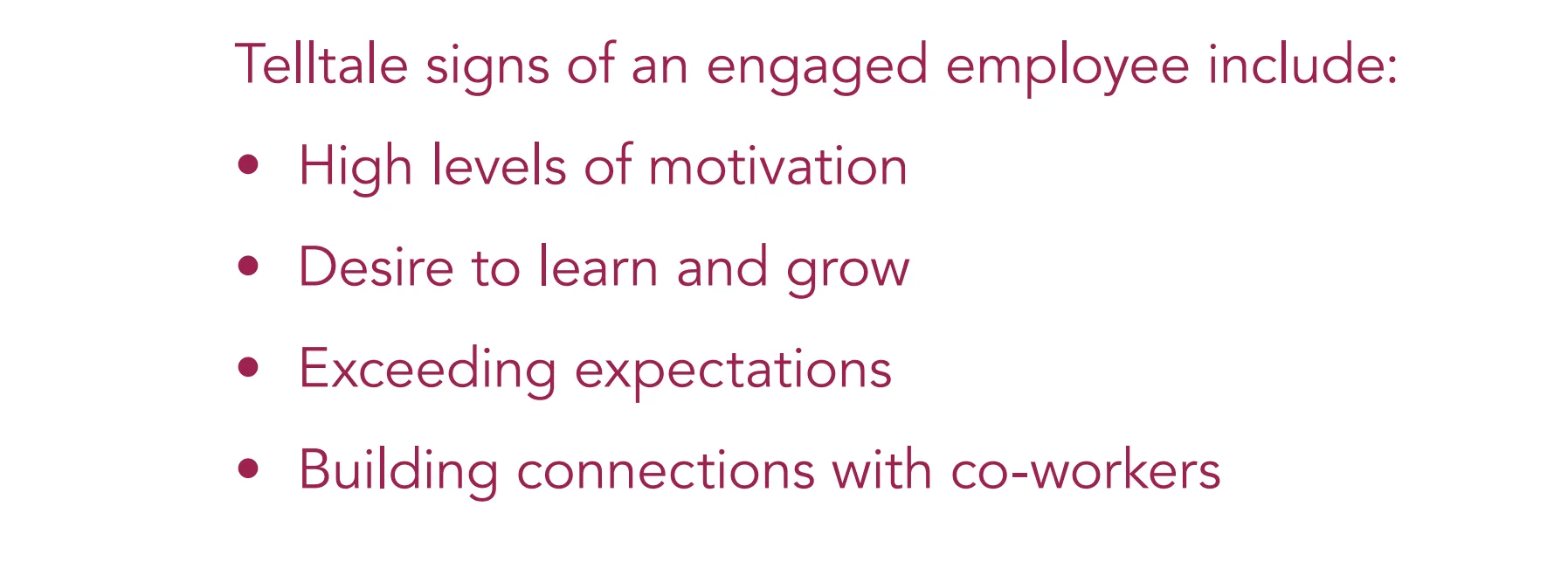
That kind of work environment affects some major business outcomes and promotes the kind of efforts and behaviors you want to see more of.
Let's look at some of the key areas that benefit.
Less absenteeism
According to Gallup's 10th employee engagement meta-analysis, a good engagement plan could reduce your employees' absenteeism by up to 81%. Employees engaged in the work they're doing are more likely to show up to work than disengaged employees.
When that happens here and there, it might not make a huge difference, but enough absences can set behind projects and cause stress across the team.
Reduced turnover rates
Improving employee engagement can not only reduce turnover by 43%, but it also strengthens the connection employees feel to their work and those they work with. That means better collaboration, honest and respectful communication, and ultimately, a workplace that becomes a community. Communities are tough to walk away from.
Higher profit
Generating more profit in an improved work environment that provides healthy employee engagement, satisfaction, and wellbeing isn’t a lucky coincidence; it’s a direct outcome.
According to Gallup, a thoroughly planned employee engagement program can help boost your profitability by 23%. That's because engaged employees are more productive and more likely to follow through on business strategies and deliver a superior customer experience than those who aren't engaged.
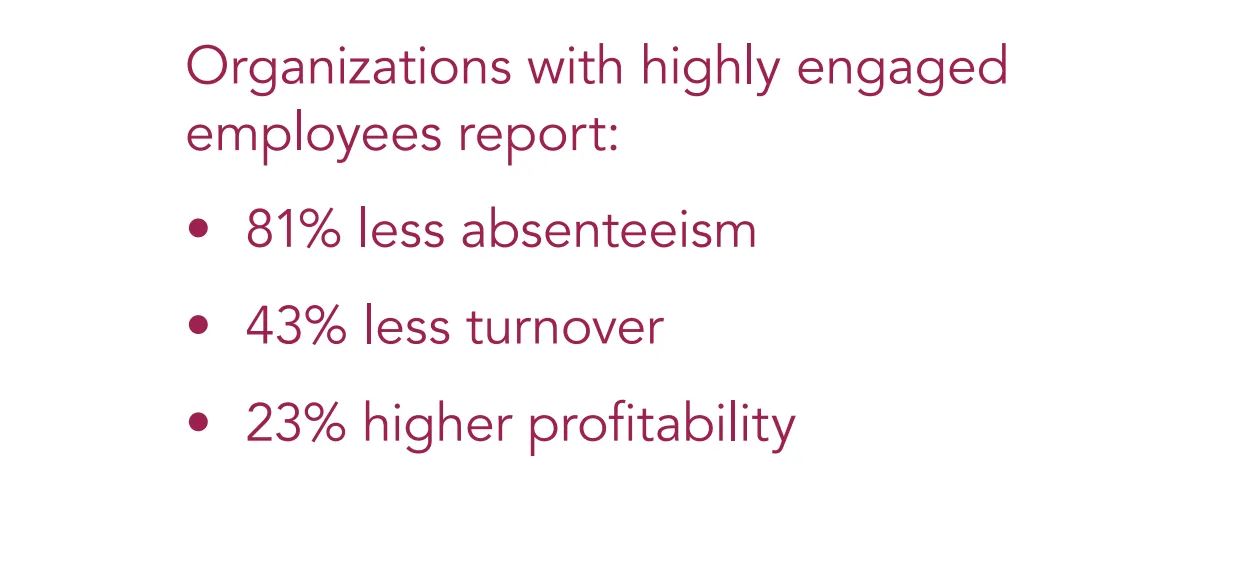
Here are six more ways to increase employee engagement, regardless of the external challenges an organization may be facing.
How to create and maintain an employee engagement plan?
Understanding employee engagement isn’t enough to build a suitable program for your company. Let's look at how to set up the foundation.
Tie the plan to company values
Your company’s core values are the fundamental beliefs and philosophies that drive the organization. They also help guide the internal conduct between employees, external business relationships, and your employee engagement plan.
We'll get into some specific strategies within an employee engagement plan in a bit, but no matter what the specific engagement initiatives are, they should be directly linked to values like belonging, respect, innovation, and teamwork. Recognizing employees when these values manifest increases the chances you'll see them more frequently.
Conduct employee surveys to find out what works and what doesn't
Use engagement surveys to figure out what works with your employees. Like any organizational program, some guidance from the start can help you tailor it to your employees, and ongoing conversations can help you fine-tune as you go.
In this context, you can focus on understanding their aspirations, preferred communication styles, and even personal passions. You can also find out what areas need improvement. Use a combination of close-ended and open-ended questions to guarantee detailed feedback.
The main thing is to ensure employees’ voices are heard.
Engaged employees are ones that feel listened to. In fact, when employees feel their ideas and suggestions matter, they’re more than 2x as likely to report a positive employee experience (83% vs. 34%).
The goal of any company is to grow as fast as possible. Make this process easier by giving up outdated, top-down control models, and instead give more control to the people who know best – the employees doing the work.
Giving managers the autonomy to run their team the way they see fit not only builds organizational trust, but also gives employees a sense of ownership over their work. In the end, the best way to keep employees engaged is by asking them what they need.
With a survey tool, you can get to the heart of organizational issues in real time. The survey results provide leaders with new insights into employee productivity and serve as warning signs for low morale and disengagement.
It also helps if you keep the survey anonymous initially to help the employees feel more at ease to express themselves freely.
This is important because while these surveys have the potential to improve the business’ bottom line, leaders and their employees must be on the same page for it to be a success.
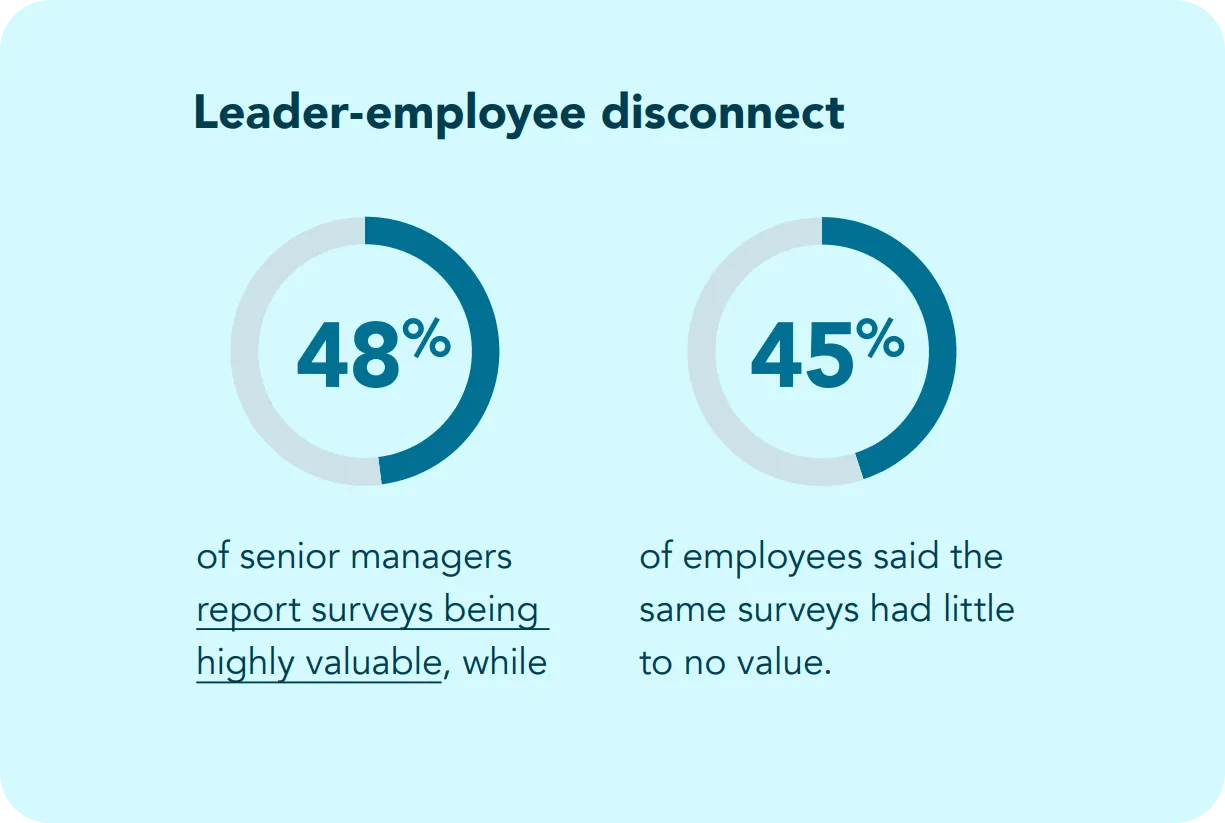
Decide on the changes you want to implement
Once you’ve gathered enough data and insights from your surveys, it’s time to see what to put into motion.
It's important to note you shouldn't try to do too much too quickly. A scattered focus on many changes can be less impactful than a concentrated focus on a few changes. It can be a good practice to categorize things by urgency, effect, feasibility, and short and long-term oriented.
Identify solutions
To find the best solutions, you can follow the same route you took when deciding what to implement. Hold brainstorming sessions with different departments or research the best practices by consulting professionals or looking at the competition.
Also, don’t shy away from leveraging technology to make things easier. For instance, if you’re having communication troubles, Workhuman®'s Social Recognition® platform can help your colleagues connect and recognize one another.
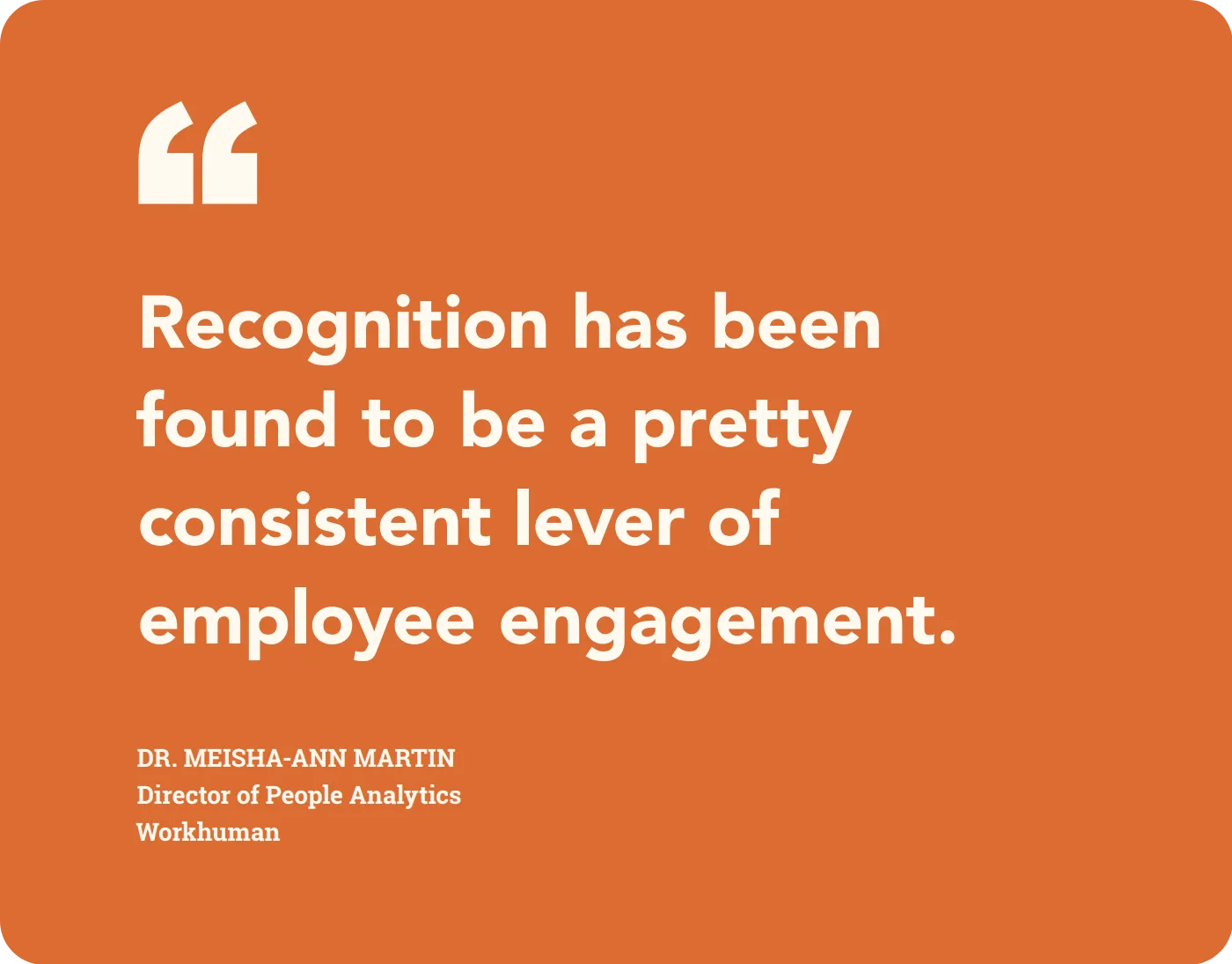
Put a plan in action
A good plan needs a clear and concise structure that provides a clear roadmap for everyone involved. This means it’ll include possible responsibilities, timelines, and expected results.
You’ll also need to set measurable goals to track your progress easily. No plan is complete without planning for the unplanned. As best as you can, try to anticipate potential roadblocks and challenges along the way.
These require backup plans and strategies to keep the original goals attainable and open communication channels between everybody. Being prepared to improvise will help keep everything on track.
Ensure continuity with constant communication
Ensuring continuous communication in employee engagement plans or any organizational initiative is the linchpin that helps guarantee results over time. Communication helps keep everyone informed of the progress, builds trust, encourages feedback, and reinforces commitment.
Pick an effective communication channel for your organization to use to achieve clear communication. This can be chat platforms, emails, or personal and virtual meetings.
You can also set up a fixed communication schedule to get regular updates. This doesn’t mean impromptu feedback is unwelcome, but a plan guarantees consistency.
Not to undo everything thus far, but watch out for information overload. Bombarding your employees with too much information can lead to disengagement or disinterest. There's a fine line you'll find. The cadence of communication might be an area to check in with employees about.
Evaluate the outcomes
Whether quarterly, semi-annually, or annually, you should have a scheduled time when you evaluate the outcomes of the engagement plan. Ask yourself questions like: Has employee retention improved? Are we receiving more employee feedback? Have job satisfaction scores improved?
While there are metrics you can measure quantitatively, the qualitative effects should not be overlooked. Overall, are employees seeming more engaged at work? Are internal communications more frequent and collaborative? The answers to these questions will help you articulate the current state of employee engagement.
How do you measure the success of employee engagement programs?
Measuring the success of employee engagement programs should incorporate both quantitative data (are fewer people leaving?) and qualitative data (how are employees feeling about the changes?). There are a handful of ways to get that information from employees that can help you continue to improve the workplace culture.
Employee satisfaction surveys
Employee satisfaction surveys are one of the best tools for quickly identifying and addressing problems before they escalate. Surveys also serve as benchmarks for organizations to compare their employee experience over time.
To conduct successful engagement surveys, you can start by determining the objective. Is this survey a routine check-in to ensure everyone follows the plans, or are you getting feedback on recent changes?
Moreover, a healthy mix of closed and open-ended questions can ensure detailed feedback.
Meetings
Meetings are essential to measuring your engagement plan’s efficiency, whether virtual or in-person. This is mainly because they show the workforce they’re one team and foster an environment for problem-solving.
Most importantly, meetings provide a unified platform to discuss, debate, and finalize critical decisions. And they help ensure everyone is on the same page regarding the program and any other company project.
Make sure to avoid overly crowded meetings, as they can quickly become unproductive. Only invite those relevant to the point at hand and keep the room manageable—even if that means conducting another meeting later to bring others on board.
Exit interviews
If there’s one thing that can help you continuously improve your company and the program, it’s exit interviews.
These interviews are structured discussions you have with employees who are leaving the organization. Your primary objective here is to understand why they’re departing and gather honest feedback about their experience with the company and program.
Employees might be more inclined to be honest as they will be less likely to feel being open and honest, even if it's hard, won't impact their experience at the organization.
Turnover rate
On the quantitative end is a company's turnover rate – one of the primary metrics of any employee engagement plan.
It's important to note that not all turnover is problematic. If employees are leaving because of external factors like pursuing a degree or taking care of a loved one, that's just life taking precedence, not an indictment on your strategy. Understanding why someone is leaving and what you could have done to prevent it is another important job of exit interviews.
Anonymous feedback
The final step in keeping your employee engagement plan successful is anonymous feedback. Now, this is a bit similar to the first steps with surveys, but workers do it anonymously.
They provide input, raise concerns, and give suggestions without revealing anything about themselves.
This feedback mode is valuable as it promotes honest and uninhibited communication. When it comes to employee engagement, it’ll help your colleagues participate more and express their thoughts on the program without fearing misunderstanding or retribution.
You’ll hear where things are going wrong and what they truly think about the plan. However, the only way to make sure anonymous feedback sticks around is by constantly promoting it to your employees and, later on, acting on it when possible.
10 effective employee engagement program ideas and initiatives
There is no shortage of ideas that can positively impact employee engagement. By surveying your employees and identifying the needs of your organization, you can create your custom plan. But here are a few general ideas that can get you started.
1. Design effective onboarding
Onboarding an employee is like making a first impression. It’s about putting your best foot forward – previewing the values and culture of the organization to the employee. And like first impressions, onboarding can be critical to an employee’s relationship with a company.
Despite organizations being aware of its importance, only 12% of employees strongly agree their company’s onboarding was effective. Yet, when employees do receive great onboarding, 69% of them are likely to stay for at least three years at the company.

The foundation for employee engagement starts on day one. Ensure your onboarding process is far-reaching, transparent, and interesting. Ask highly engaged employees to speak to new employees; make space for questions and comments; and facilitate team building for new hires to bond with each other and the company.
2. Promote connection and purpose
As humans, we are hardwired to crave connection – something that has become even more important with the rise of remote and hybrid work. When employees feel connected to their co-workers and the organization’s mission, they are more engaged, not to mention more productive and less likely to leave the organization.

Focus on encouraging participation in events – whether in person or remotely. And make sure to include those who may be remote in in-person events and vice versa. Start employee resource groups to help build a sense of camaraderie between workers with similar interests or commonalities.
A Social Recognition® program linked to company values or strategic initiatives can also provide frequent reminders of how day-to-day work is directly connected to company goals, generating a positive feedback loop within the organization.
3. Build recognition and feedback into culture
The greater the sense of appreciation in an organization, the more engaged workers there are. Workhuman’s latest survey report found people who were thanked in the last month are more than 2x as likely to be highly engaged.
Everyone has different ways of expressing thoughts and ideas. But if those differences aren't bridged with openness, it can easily lead to misunderstanding and outright confusion.
Frequent and meaningful feedback is also key to engagement: Gallup found employees who’ve had conversations with their managers about goals and progress in the last six months are almost 3x more likely to be engaged.
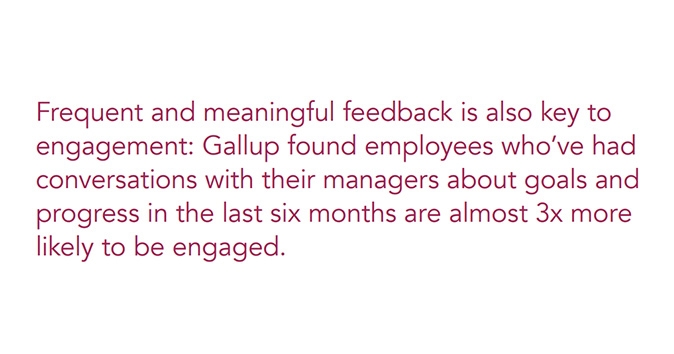
Engaging your employee base takes effort, but the ROI certainly makes it worth it. Investing in social recognition and continuous performance development platforms is the best way to infuse an organization with gratitude and growth. Praise and feedback in real time – rather than six months later at an annual review – is essential for any organization’s engagement and retention strategy.
5. Offer mentorship programs to employees
Mentorship programs are an integral part of a successful professional development plan. By pairing more experienced employees with those just starting out or in a position of growing in their role, you can expedite their development.
Mentors can help mentees navigate challenges and difficult career situations, they can instill confidence, and encourage mentees to aim higher in their aspirations.
6. Form employee resource groups (ERGs)
Sometimes, we don’t communicate or feel comfortable where we are just because we don’t feel like we belong there. Enter employee resource groups.
These are voluntary, employee-led groups that individuals form around shared backgrounds or demographics. Essentially, these groups are there to offer support and help in the workforce for those who feel left out.
They also foster diversity and inclusion and help promote personal and professional growth. You can set up ERGs for parents, employees of color, LGBTQIA+ employees, and those interested in sustainability in the workplace.
7. Organize fun games and challenges
Games and friendly challenges might not seem like an obvious choice for a workplace activity, but sometimes disconnecting from work is exactly what's needed to reinvigorate an employee's motivation.
Organizing fun activities at work can help your employees enjoy their day more. You can have games like Two Truths and a Lie, which can help everyone learn something new about each other.
8. Celebrate your employees
It’s easy to go to work every day without realizing who is celebrating their birthday today or who just had a baby.
Such information might seem outside the confines of work, but the start of creating a healthy work environment or driving engagement is recognizing an employee for the person they are in and outside of work.
Life Events from Workhuman® was designed specifically to celebrate these moments. When team members can share in these celebrations, it brings them closer together and creates a company culture of community.
9. Regular team-building activities
Team-building activities are another fun way to help employees connect. They’re essentially organized events or exercises to improve team cohesion, promote collaboration, and develop communication.
What’s more, a lot of fun engagement activities don’t have to be office-based. You can take your employees on outdoor adventures like hiking or rafting, where you’ll need to team up to work. There are also creative workshops, like pottery, that can foster creativity and collaboration.
10. Provide flexible work hours and remote work
In our Workhuman iQ survey, we found where employees work matters. But more specifically, understanding where they want to work matters even more. It turns out it can affect the entirety of the employee experience.
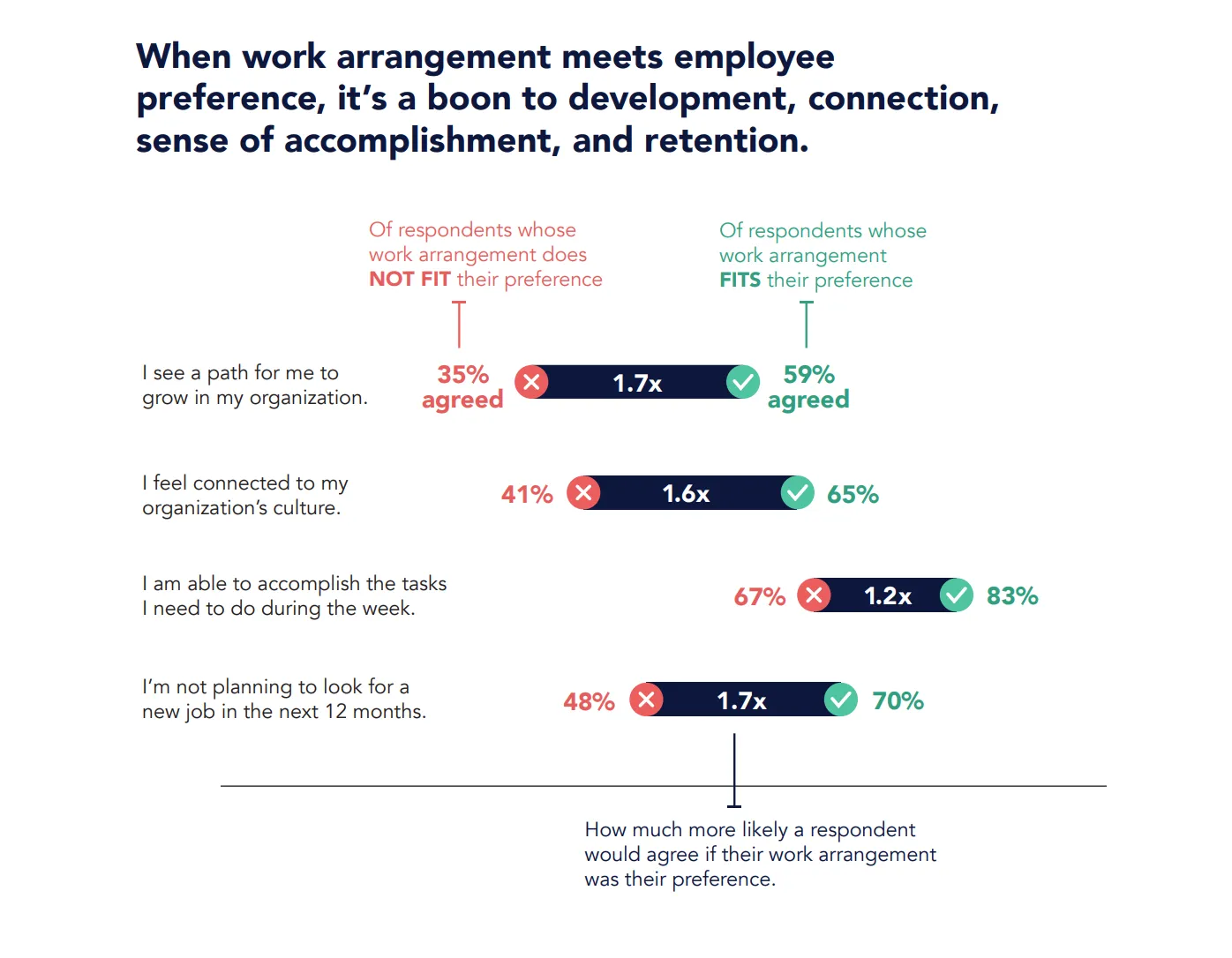
Offering flexible hours and remote work means you give your employees full autonomy to choose where and when to work. This little gesture can help show trust and convey to employees that you believe they’ll deliver work on time.
This also allows individuals to balance their personal lives and work, making them feel more valued and understood by their employers, thus boosting engagement and connection with work.
FAQs
What are the best ways to reward employees?
Some of the best ways to reward your employees include the following:
- Employee recognition
- Personalized gifts based on interest
- Additional paid-off time
- Professional development opportunities
How do you motivate employees with rewards?
Giving employees rewards isn’t enough to get them motivated. To get the rewards to work, you’ll need to ensure that the gifts are genuinely tied to an accomplishment or a huge milestone to give them a sense of achievement and involve their colleagues in the recognition progress.
Peer-to-peer recognition vs. mere employer recognition can help create wider connections within the company.
Wrap Up
Employee engagement programs are instrumental in fostering a strong connection between employees, their colleagues, and their roles at work.
Their benefits span from reduced turnover rates to increased productivity and even increased profitability, making such programs invaluable.
To effectively build one, you’ll need to leverage engagement software to review your company’s core values, conduct various surveys, and continuously iterate. It's a consistent process that will steadily reap benefits for everyone in the organization.
About the author
Ryan Stoltz
Ryan is a search marketing manager and content strategist at Workhuman where he writes on the next evolution of the workplace. Outside of the workplace, he's a diehard 49ers fan, comedy junkie, and has trouble avoiding sweets on a nightly basis.